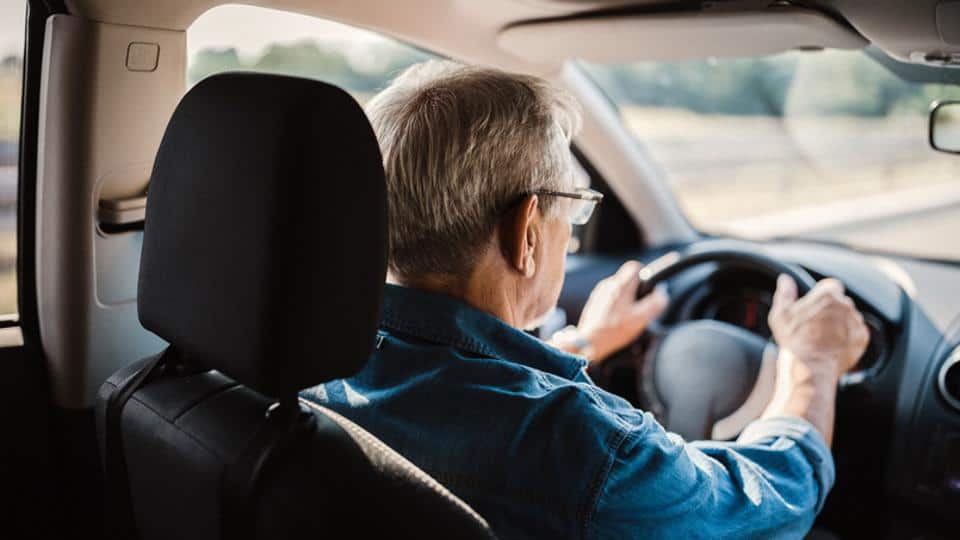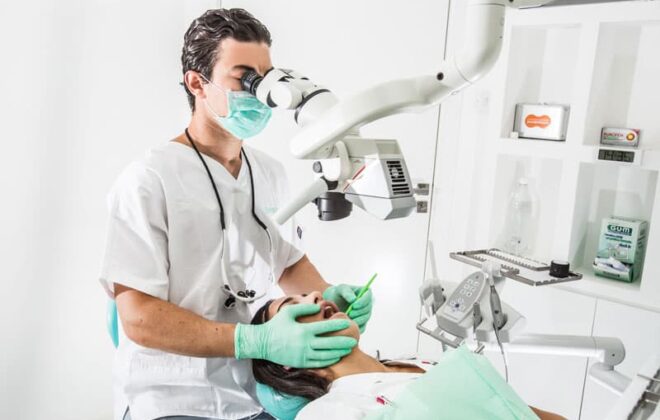Can You Drive After a Root Canal?
Need a root canal and wondering whether you can drive after the procedure?
Even though you may be in some pain or notice sensitivity, you can usually drive, return to work, and generally go about your normal routine.
Most of the time, a dentist or endodontist will use a local anesthetic to numb the area around the affected tooth rather than a general anesthetic, which would make driving unsafe afterward.
There may be circumstances when your doctor will recommend against driving, so be sure to talk about post-procedure activities prior to the day of your root canal.
Is it safe to drive after a root canal?
A root canal procedure is done to remove the pulp from the center of a tooth. The procedure is relatively simple:
- The tooth is numbed with an injection of a local anesthetic.
- Once numbing takes effect, your dentist will create a small opening on the top or crown of the tooth and remove the pulp inside.
- The area inside is cleaned and a filling is put in place to seal the opening.
Your mouth should remain numb for a while, allowing you to get home before any discomfort sets in.
What to consider before driving after the procedure
If you start to experience pain that would distract you from concentrating on the road, having someone drive you may be a safer choice.
If you’ve had a filling or root canal procedure before, use that experience to gauge your ability to drive. That said, every root canal appointment can be a little different. Consider getting a ride if:
- you have a low tolerance for pain and pain affects your ability to concentrate while driving
- the root canal is accompanied by other oral procedures, as spending a long time in the dentist’s chair can be tiring or cause headaches that can interfere with your ability to drive
When to have someone else drive after the procedure
There are three other specific circumstances in which a driver would be necessary:
- Allergic reaction to lidocaine or bupivacaine. These are both common numbing agents used in root canal procedures. The Journal of Dental Anesthesia and Pain Medicine reports that such allergies are rare, but reactions can occur within seconds of injection. You may not know you have this allergy until after the fact. If you have a negative reaction to the anesthetic, see if someone can drive you home.
- Use of sedation or general anesthesia. If you are given sedative medication or put to sleep for any medical procedure, guidelines from the American Association of Nurse Anesthetists suggest that you not drive immediately after the procedure or at any time in the next 12 to 24 hours.
- Use of narcotics for pain relief. If you are given a narcotic medication at the dentist’s office, you will need a ride home. These medications can cause drowsiness, making driving unsafe.
Why general anesthesia may be used
- Severe anxiety about the procedure
- A severe gag reflex that could interfere with the procedure
- Cognitive impairments that might affect the ability to follow instructions
- Having multiple procedures during the same visit
When it might be safe to drive yourself home
If you’ve received a local anesthetic, there’s usually no set time to wait before getting behind the wheel.
Your doctor may wait several minutes after the procedure ends to make sure there’s no bleeding or other complication. If everything looks good and you’re experiencing no excessive pain, you should be able to drive shortly after the procedure ends.
If, however, you’re feeling nauseated or otherwise uncomfortable, you should wait until the feeling passes before driving.
When can I go back to work?
Your mouth may feel numb for a few hours after a root canal. You may have some slight sensitivity and mild pain when the numbing goes away.
Everyone’s reaction to a root canal is unique, as is everyone’s pain tolerance and reaction to treatment. In general, you should be able to work and carry out your normal activities the same day as a root canal.
If your job involves strenuous labor, you may need to take the rest of the day off to avoid the risk of excessive bleeding.
When can I do other activities after a root canal?
Aside from work, keep the following tips in mind regarding other regular activities:
- Avoid exercise for a day or two to prevent bleeding complications. Give yourself a couple of days to let your mouth start to heal.
- Don’t eat until the numbness is gone. The American Association of Endodontists recommends not eating until the numbness is gone so you don’t accidentally bite your tongue or the inside of your cheek.
- Stay away from hot food and beverages for the next day or two, especially while your tooth is especially sensitive.
- Eat soft foods like yogurt, eggs, and liquids.
- Avoid hard, crunchy food like nuts and seeds.
- Avoid alcohol if you’re taking prescription pain relievers.
- Brush and floss as you normally would, taking care to be gentle around the affected tooth.
How can I prepare for a root canal?
A root canal procedure can take anywhere from 90 minutes to 3 hours and may require two visits.
In some ways, it’s not that different than having a traditional cavity filling procedure. For example, a local anesthetic is almost always used, meaning you won’t lose consciousness during the procedure.
But because it is somewhat time consuming, you will need to plan around your workday and the availability of a driver if you believe this is necessary.
Plan ahead with your dentist
If you’re planning on getting a ride, talk with your dentist or endodontist to get an idea of how long your specific procedure should take.
This will give your designated driver an idea of when you’ll be ready for pickup. You may also want to ask the office staff to call your driver when you’re done or the doctor is almost finished.
When should I see my doctor?
While some pain and tooth sensitivity are normal after a root canal, you should contact your doctor’s office if you experience any of the following symptoms:
- pain that hasn’t lessened or is increasing after a few days
- bleeding
- swelling
- fever
- itching
- rash
- temporary filling become loose or comes out completely
If the pain or bleeding is severe, then get a ride to and from the doctor.
If fever or a rash or other symptom is interfering with your ability to concentrate, get a ride rather than try to make it through traffic on your own.
The takeaway
Root canals seem to have a reputation of being painful. But according to an article in the International Journal of Health Sciences, they’re generally well-tolerated with low rates of complications.
Because most root canal procedures are done with a local anesthetic to numb the tooth and usually don’t cause much pain or discomfort, you should be able to drive home or to work safely after the procedure.
If you receive sedation medication or general anesthesia, you’ll want to get a ride home. Talk with your dentist or endodontist about what to expect.
Be honest with yourself. If you’re anxious about the root canal or you have had complications from previous oral procedures, make plans to get a ride. Otherwise, drive home safely and relax for a while.
Author: James Roland
Article originally appeared at: https://www.healthline.com/



